When T. Rex Meets Triceratops in the New Dino Hall, It Will Be a Violent Affair
The Natural History Museum’s dinosaur display highlights the “red in tooth and claw” nature of the Cretaceous way of life
Tyrannosaurus and Triceratops. Even after more than a century of fossil finds all over the world, these two dinosaurs remain among the most iconic of all. And in the newly renovated dinosaur and fossil hall slated to open in 2019 at the National Museum of Natural History, the two saurians will be dramatically positioned in a way the public has never seen before.
Most museum-bound dinosaurs are reconstructed standing still or in mid-stride, isolated from each other in the cavernous space of exhibition galleries. But in the Smithsonian’s new dinosaur hall, designed and approved by museum experts including Matthew Carrano, curator of dinosaurs, the Triceratops and Tyrannosaurus will have a much closer connection.
Bent down with jaws agape, the 38-foot-long “Wankel rex,” named after Kathy Wankel who discovered it in 1988, will be positioning itself to pull off the skull from the carcass of the Triceratops, known as “Hatcher” for its 19th-century discoverer.
Inspired by tyrannosaur bite marks found on the frills of multiple Triceratops specimens, the display catches a grisly and terrifying moment that we know must have happened between 68 and 66 million years ago.
“It’s a grim scene,” Carrano acknowledges, but the fossil evidence backs up the skeletal moment frozen in time. Healed wounds and scrapes on Cretaceous bones have shown that Tyrannosaurus was both a capable hunter and an opportunistic scavenger, just as spotted hyenas are today. Visitors will be left to wonder whether the Smithsonian's T. rex caught its meal on the hoof or happened onto a rotting slab of carrion—and let nothing go to waste.
And for those who know the museum’s history, the exhibition also has something of a sentimental note. “Hatcher” the Triceratops, nicknamed for paleontologist John Bell Hatcher, has been on view at the Smithsonian since 1905, playing a featured role in the Smithsonian's original "Hall of Extinct Monsters.”
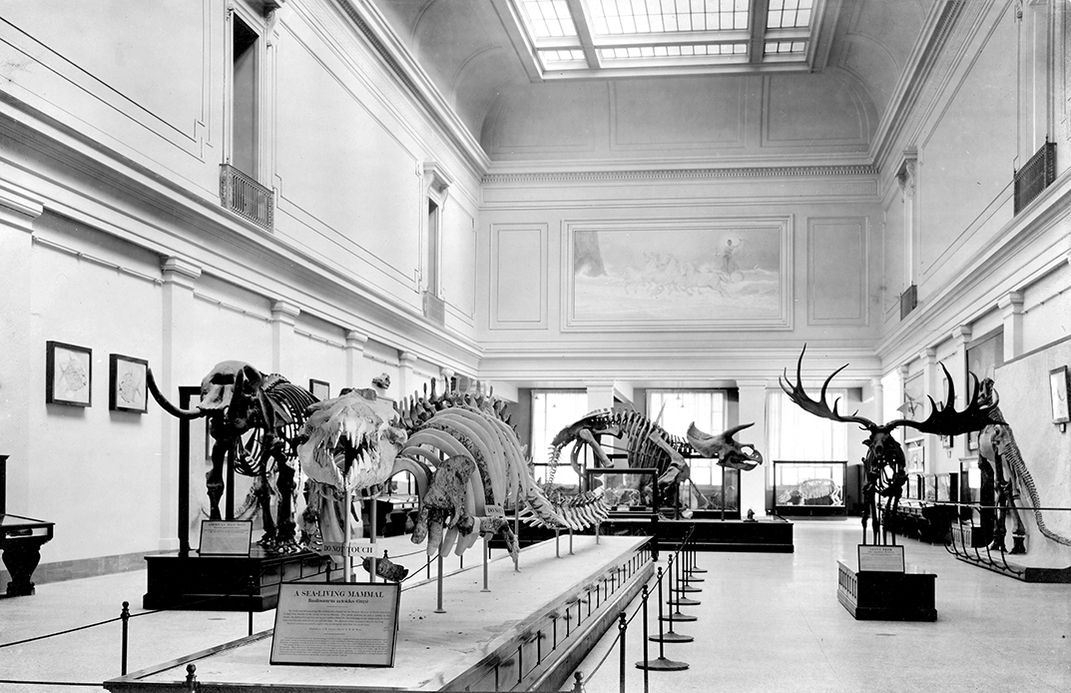
The herbivore guarded the halls of the museum for decades, even having its joints repositioned as paleontologists revised their theories on the correct Triceratops posture, and the dinosaur’s mock death is a kind of retirement for the artifact.
“Hatcher’s done its duty,” says Carrano, and so he adds, “it was time to bring that to a close.”
Not that these dinosaurs will be alone. They’re only one part, albeit a startling one, of the National Fossil Hall’s major five-year overhaul. So in addition to the T. rex and Hatcher, Carrano and colleagues are also overseeing the progress of other dinosaurs such as the Thescelosaurus and Edmontosaurus that were on display in the old hall. These dinosaurs are now being freed from the plaster they were previously encased in, giving paleontologists a new look at these classic dinosaurs.
“It’s a pretty neat process so you’re seeing things that never actually got prepared,” says Carrano, such as cartilage and stiffened rods called ossified tendons on the little Thescelosaurus.
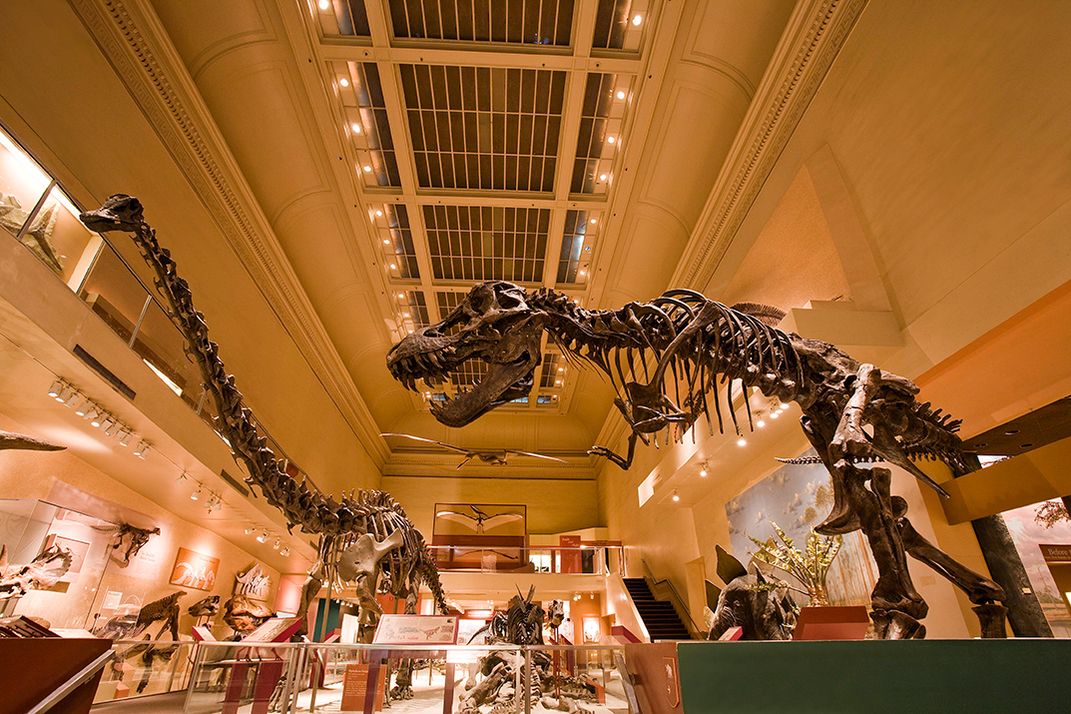
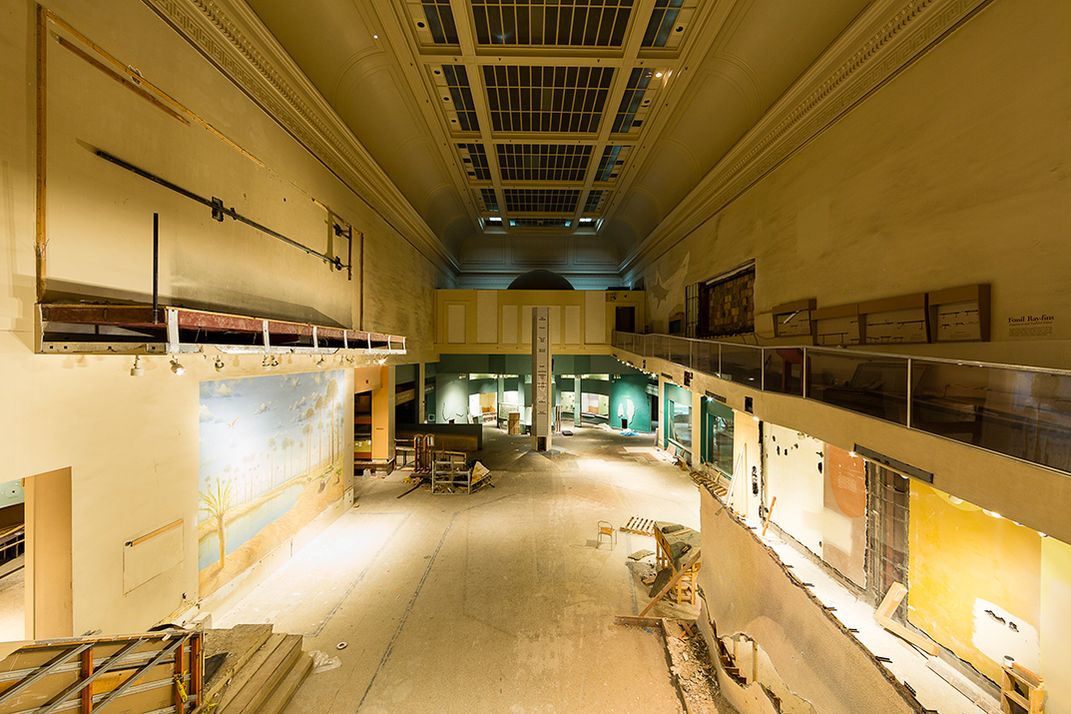
But creating new dinosaur mounts isn’t as easy as putting a puzzle together. This is especially true of the Triceratops and Tyrannosaurus display. The embattled dinosaurs are mostly going to consist of real fossil material, and this effort to bring the real deal to the public creates some unique challenges.
The first step, says Peter May, president of Research Casting International in Canada, where the specimens are being prepared, “is to clean and consolidate the fossil material, systematically go through each and every element, and cleaning the specimen, making sure there aren’t any cracks that could give out as the individual elements are being handled.”
Once all this prep work had been done for the Tyrannosaurus, May says, the skeleton is pieced together from the hips first, followed by the vertebrae leading up towards the neck, the tail, ribs, arms and the hind feet. The famous skull will be a new cast created by the Museum of the Rockies, who initially excavated the Wankel rex in 1988, with the authentic, delicate bones held safely in the museum’s collection.
If these skeletons were casts, then their supporting armature could be hidden within their bones. But bringing Hatcher and the T. rex to life, or something close to it, requires something different. Fossil bones are heavier than their fresh counterparts and can be very brittle. They require a cradle that is both delicate and strong.
“The toughest challenge is bending the steel accurately onto the original fossil material,” May says. “Fossils are inherently fragile, steel very unforgiving,” he adds. This takes skills as refined as those of a watchmaker. “Our blacksmiths have to have a velvet touch bending the steel,” says May.
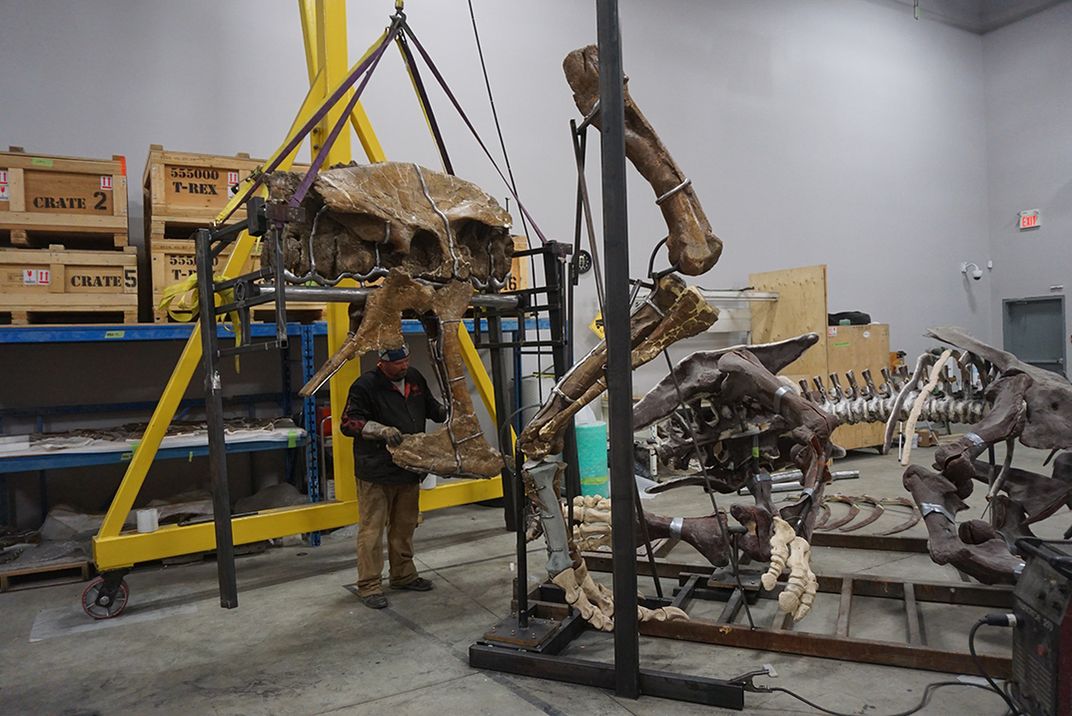
The needs of science put another constraint on the process. Mounting the real bones means that paleontologists will want to study the skeletons to keep investigating the prehistoric world, possibly even being able to remove some pieces.
The steel armature is being made so that some of the bones, such as the arms, can be easily removed without dissembling the entire mount. And for those that are too large or too high off the ground to move, Carrano says, the Smithsonian scientists created 3D scans of the bones so the entire skeleton will remain accessible.
Once the mount is finalized, all the pieces will come back together in Washington, D.C. to create a vivid scene of Cretaceous life and death.
Yet, dramatic as it is, the display is only a jumping-off point to a greater lost world. “Organisms fit into environments,” Carrano says, and these dinosaurs are not “just trophy specimens to be thought of on their own.”
Standing tall among other fossils like ancient clams and early alligators, the two famous dinosaurs will hopefully inspire visitors to think about how all these species interacted and influenced each other. The Late Cretaceous world may feel incredibly distant, but we can still visit thanks to the clues left in rock and bone.
/https://tf-cmsv2-smithsonianmag-media.s3.amazonaws.com/accounts/headshot/RileyBlack.png)
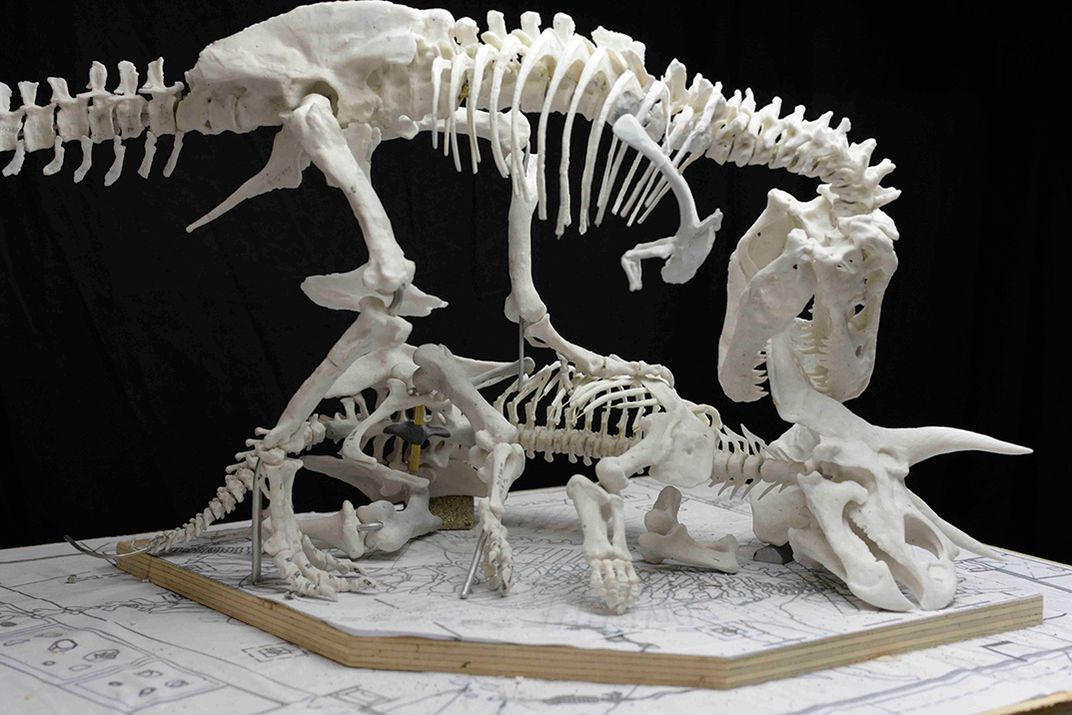
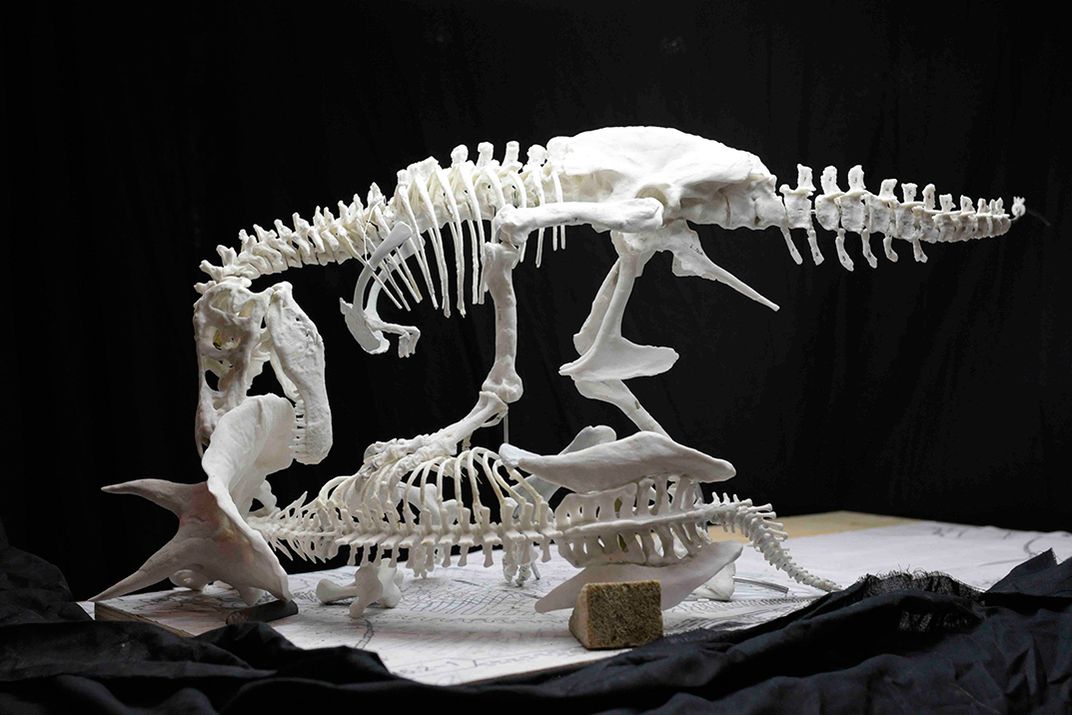
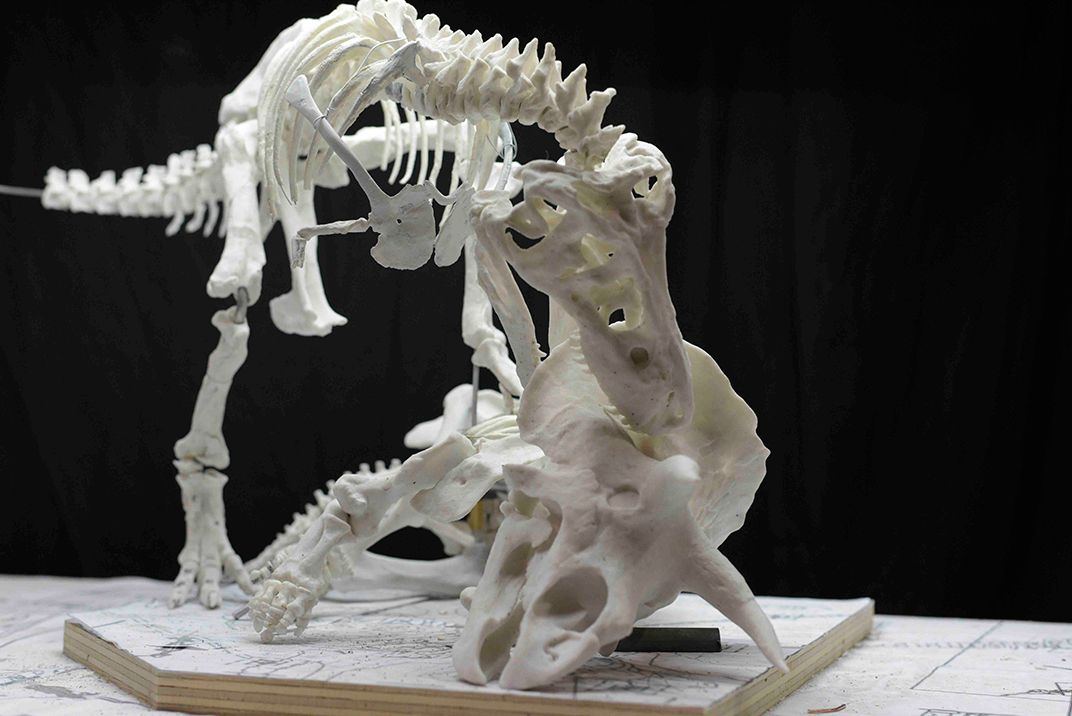
/https://tf-cmsv2-smithsonianmag-media.s3.amazonaws.com/accounts/headshot/RileyBlack.png)